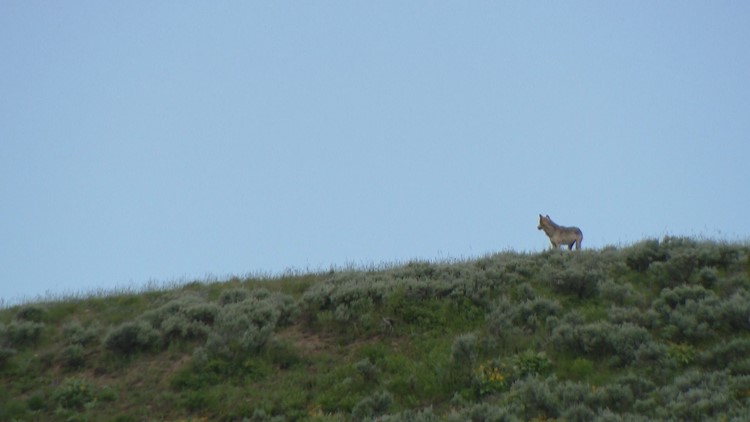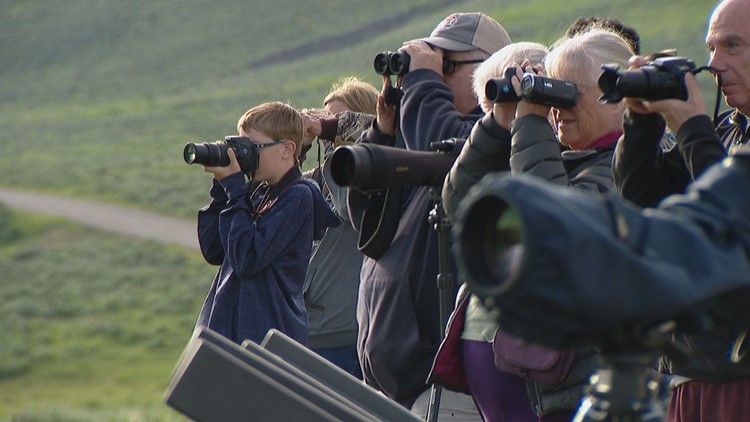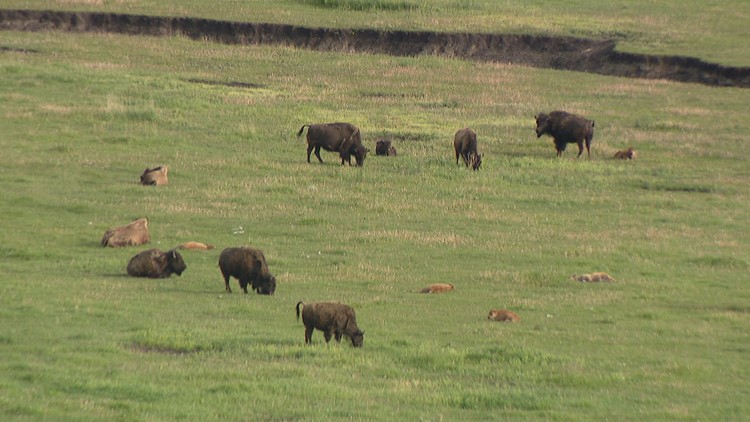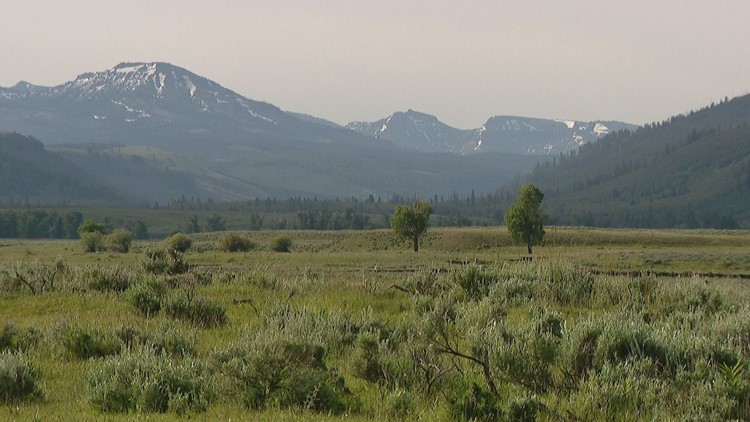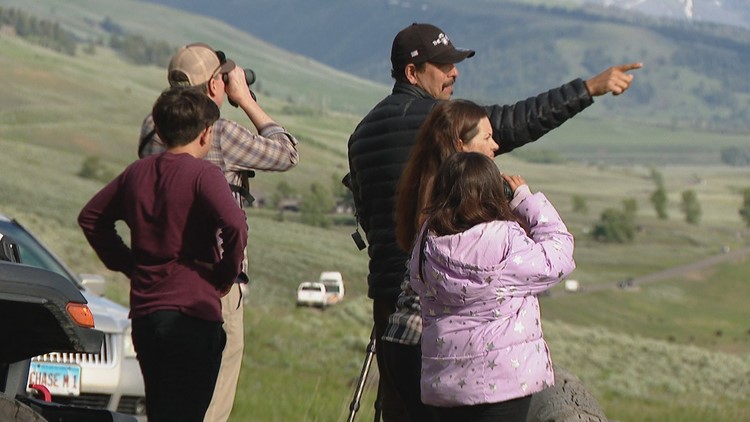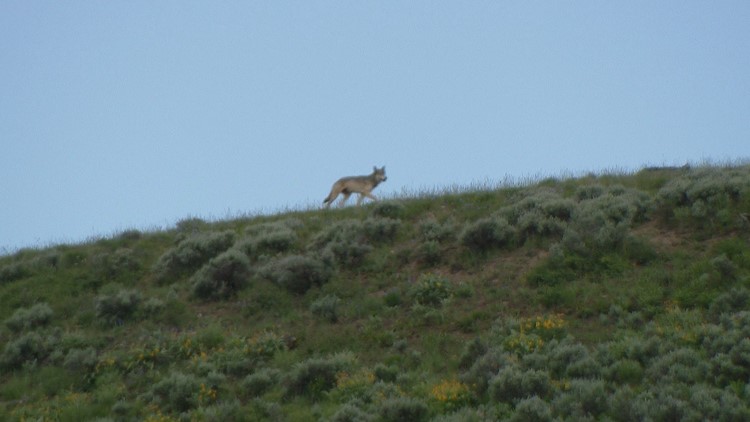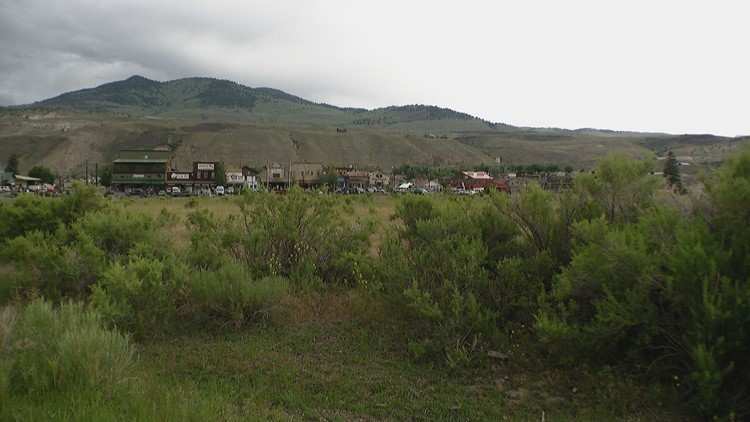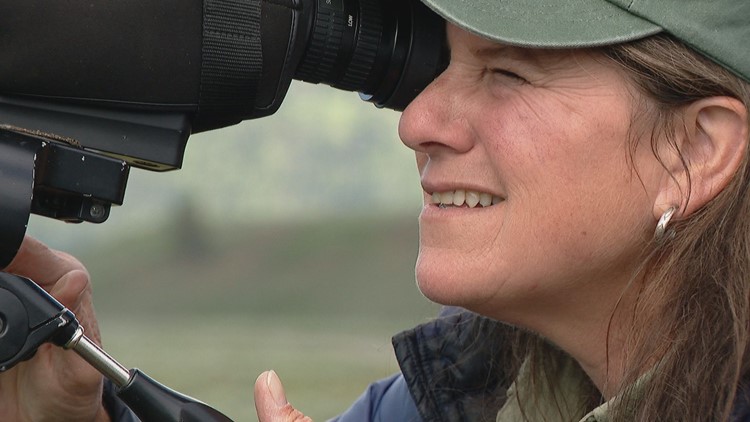Wolves are big business for Yellowstone gateway towns – could the same happen in Colorado?
Gardiner, Mont., sits just outside Yellowstone National Park and depends on tourists who come to see the wildlife.
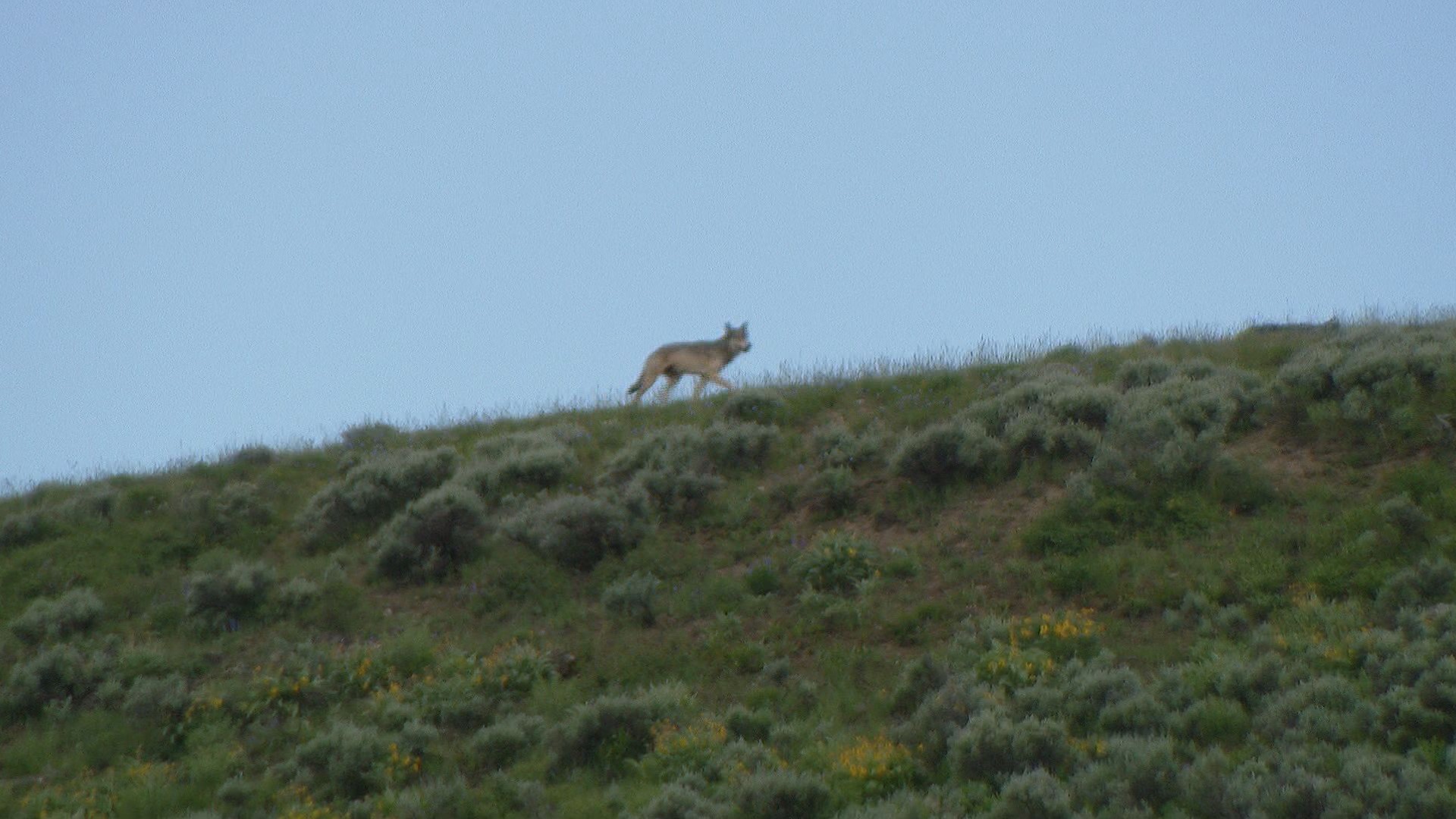
Chapter 1 Gateway to Yellowstone
The views on the Wyoming-Montana border seem like an illusion: Jagged peaks rise into the air, bison roam the mountain meadows, and wide, rushing rivers cut through it all.
For resident Ashea Mills, one word comes to mind – magical.
“That is a good word for it,” Mills said, while taking in the views near her home in Gardiner, Mont. “It just captures the imagination, It is so dynamic. It is so ever-changing.”
Gardiner, the place where Mills lives and works, is one of the main entrances to Yellowstone National Park. It is a town that depends on tourism, and Mills knows all about that. She runs a guiding business called Walking Shadow Ecology Tours of Yellowstone.
“The town of Gardiner wouldn’t exist without Yellowstone,” she said. “Absolutely the town of Gardiner is based on Yellowstone’s existence.”
The gas stations, restaurants, hotels, shops — every business that lines Gardiner’s few streets — depend on the tourists who come to the area and pour hundreds of millions of dollars into its economy every year.
People come here for many different reasons. A big one is the wildlife.
“Wolves and bears, of course,” Mills said. “Everyone wants to see the charismatic mega fauna. Everyone wants to see bears and wolves, and we get really lucky, and we know where to look and know how to look, and we’re pretty successful.”
Wolves got to Yellowstone four months before Mills did in 1995. No one knew what would happen when wolves were reintroduced to Yellowstone. Most thought people would never see them again once released. They were wrong.
“It’s been really interesting to watch this giant experiment unfold here in Yellowstone,” Mills said.
Almost 30 years after being reintroduced, people gather in Yellowstone’s Lamar Valley with hopes of spotting a gray wolf. Many are successful, and scopes are helpful.
“A lot of times, we’re viewing these animals at a mile or more away through telescopes,” Mills said. “We bring along good optics so we can take advantage of drawing that animal safely closer to our eye.”

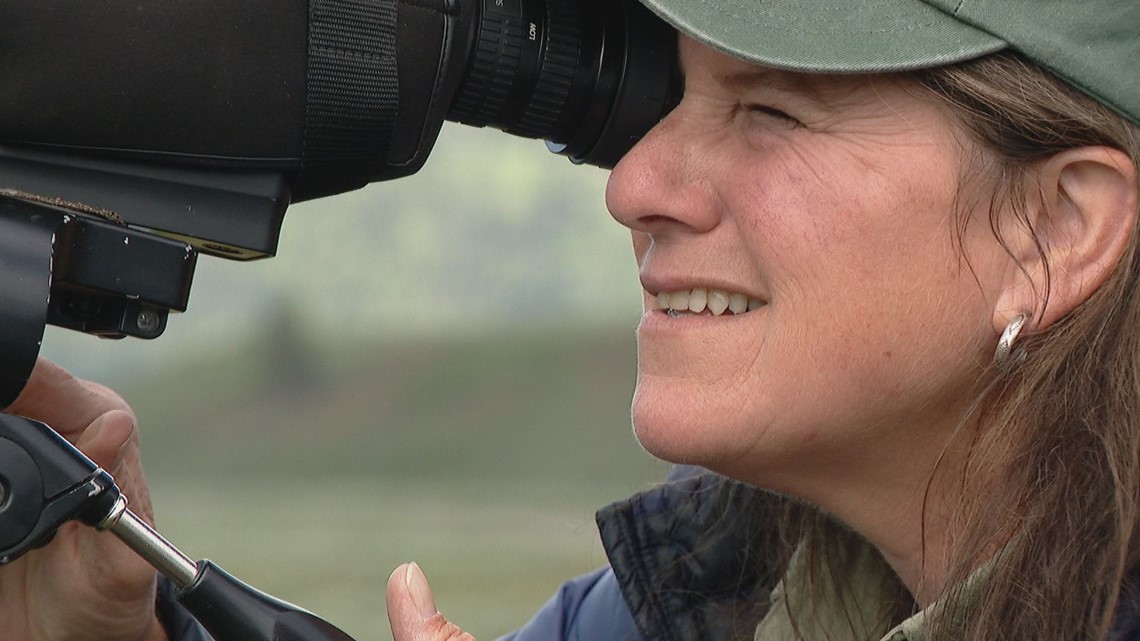
Chapter 2 'Selling the wild'
Not all wolf enthusiasts go on tours, but that does not mean they are not spending money.
“The gray wolf — the gray wolf was over by the trees up there,” said one wildlife watcher, Jeff Centeno, excitedly.
Centeno and his wife and two children traveled from California by car to the park. The wildlife was a big reason they chose to visit.
“It’s a pretty big part,” Centeno said. “We probably drive 100 miles a day just to see animals.”
They have been lucky. The wolves have been cooperating. They have seen multiple wolves through their binoculars.
“Coming from southern California, the only wolves you see is in a zoo,” Centeno said.
It is people like Centeno and his family, and those who join guided tours like Mills’, that keep this area’s economy humming along.
“We make our living basically off of selling the wild,” said Richard Parks, who owns a fly fishing shop in downtown Gardiner. His father opened the shop in 1953.
“I was baggage at the time — that was the year I turned 10,” Parks said.
He said he knows the shop depends on the recreation and wildlife in the area.
“Even if you’re not guiding, we’re all dependent on people visiting Yellowstone for whatever their motives are,’ Parks said. “The entire town is underpinned by what goes on in Yellowstone.”
Yellowstone National Park wolves
Chapter 3 Wolf hunting
Two years ago, a bill passed through Montana’s state legislature that changed how many wolves could be hunted and how they could be hunted. The sponsor, state Sen. Bob Brown, cited that hunters had concerns that wolves were affecting the elk population.
The impact on the wolf population was immediate.
“Without those limits, we knocked off about a fifth of Yellowstone’s wolves in one season and it was pretty devastating," Mills said. "We wiped out an entire pack.”
While hunters were not allowed to hunt in the park, any wolf from a Yellowstone pack that wandered out of the park was fair game.
“It was a way overreactive response to what has been a very healthy, relatively well-behaved wolf population,” Mills said.
After seeing the impact of the wolf hunt, Mills, Parks and dozens of other businesses formed the Wild Livelihoods Business Coalition. The group sponsored a study through the University of Montana to show how wolves impact the area economy.
The study showed that in 2022, wolf-viewing along brought $80 million into Park County, Mont. In the same year, same county, the state paid out $3,243 to ranchers for two wolf-related livestock deaths. Montana Fish, Wildlife and Parks said the elk population in the state is one of the largest in the country.
“When it comes down to it, this is an economic factor, and we needed to explain very clearly to the state of Montana that they are toying with an entire mechanism across our county that has dire impacts on how people can survive here,” Mills said.
Parks agreed, in his own blunt way.
“At least convince that it’s in their own interest to not make stupid policy,” Parks said.
The state agreed and changed the rules and quotas in the area near Yellowstone.
“It really did require a large response, and a coordinated response,” Mills said. “There is an economic value in this wildlife.”
Chapter 4 What will happen in Colorado?
Colorado might see an economic impact from wolves, as well. In 2020, voters narrowly passed a proposition to reintroduce gray wolves by the end of 2023. Like in Yellowstone in 1995, no one knows what will happen, and if the wolves will even be visible.
Colorado Parks and Wildlife said wildlife tourism brings in $2.4 billion to the state every year. They do not know how wolves will impact that number. Currently, CPW is working on securing wolves for release and implementing their management plan.
In Montana, Mills is curious what will happen in Colorado, if it will be similar to what has happened near her home, or something different altogether. She does know the animal has affected how she thinks about her home.
“It does something to your heart and soul when you’re not the top dog, when you’re not the largest predator on the landscape,” Mills said. “To see a wolf in the wild is a gift.”
> Video below: Wolves in the Lamar Valley:
SUGGESTED VIDEOS: Animals and Wildlife
9NEWS+
9NEWS+ has multiple live daily shows including 9NEWS Mornings, Next with Kyle Clark and 9NEWS+ Daily, an original streaming program. 9NEWS+ is where you can watch live breaking news, weather updates, and press conferences. You can also replay recent newscasts and find videos on demand of our top stories, local politics, investigations and Colorado specific features.
To download 9NEWS+ on Roku search for KUSA.
To download 9NEWS+ on Fire TV search for 9NEWS.




